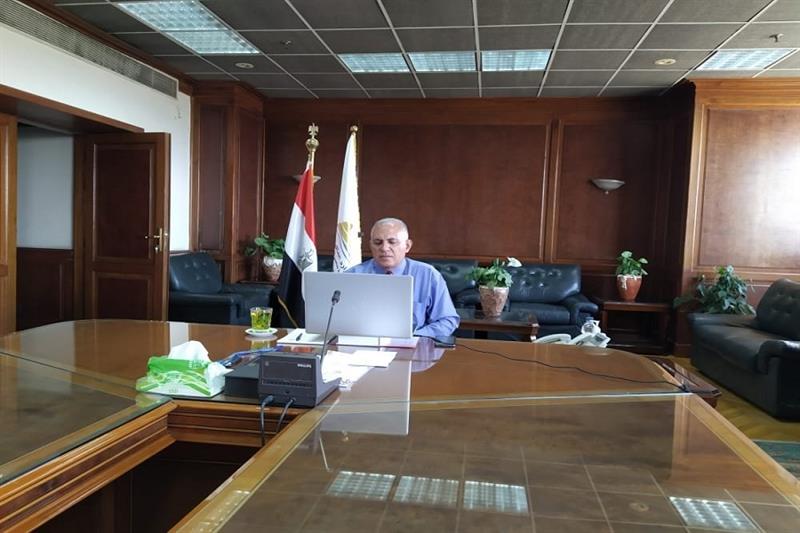

Minister of Water Resources and Irrigation Mohamed Abdel-Ati during the video conference of the Permanent Committee for Regulating the Nile s Revenues.

Abdel-Ati’s remarks came during a video conference meeting with the Permanent Committee for Regulating the Nile’s Revenues. The meeting was attended by the ministry’s executive officials and the National Water Research Centre (NWRC).
The Blue Nile, which starts in Ethiopia, generates over 85 percent of Egypt’s Nile water. Meanwhile Atbarah, which also starts in Ethiopia, joins the Nile at the Sudanese city of Atbarah and is its last tributary before it reaches the Mediterranean Sea.
Abdel-Ati said that his ministry’s departments are monitoring the Nile rainfall rates, its hydrological situation and determining the amount of water reaching Lake Nasser, Egypt’s man-made reservoir lying behind the High dam.
The Nile’s flooding season, which takes place from July to September, is caused by heavy rain in the Ethiopian highlands.
Abdel-Ati added that the ministry is doing its utmost to fulfill the water needs for all beneficiaries, including the current agricultural season.
He also reviewed the water position in different governorates all over the country and the readiness of irrigation, drainage and mechanics department to guarantee the drainage network is able to meet the water needs of all beneficiaries.
He issued directives to maintain the emergency emergency status in the ministry’s departments, asserting the need for the committee to continue regular meetings.
On 17 July, Abdel-Ati announced that the rainfall rates over the Nile River headwaters were below the average for the month of July.
Egypt – one of the driest and most water-scarce countries in the world – receives around 60 billion cubic metres (bcm) of water annually, mainly from the Nile.
However, its needs stand at around 114 bcm, placing the 102-million-plus country well below the international threshold for water scarcity at 560 cubic metres per person annually.
The large gap in water resources in Egypt is overcome by importing 54 percent of its virtual water and reusing 42 percent of its renewable sources, Abdel-Ati said in an earlier statement.
Access to Nile water is one of the outstanding points in the long-running Grand Ethiopian Renaissance Dam (GERD) dispute between downstream countries Egypt and Sudan and upstream Ethiopia.
Despite the opposition of the downstream countries to filling the GERD without signing a binding agreement that could secure the three countries’ water needs, Ethiopia has started filling the reservoir for the third consecutive year in the absence of agreement with Egypt and Sudan.
Short link:






GIPHY App Key not set. Please check settings